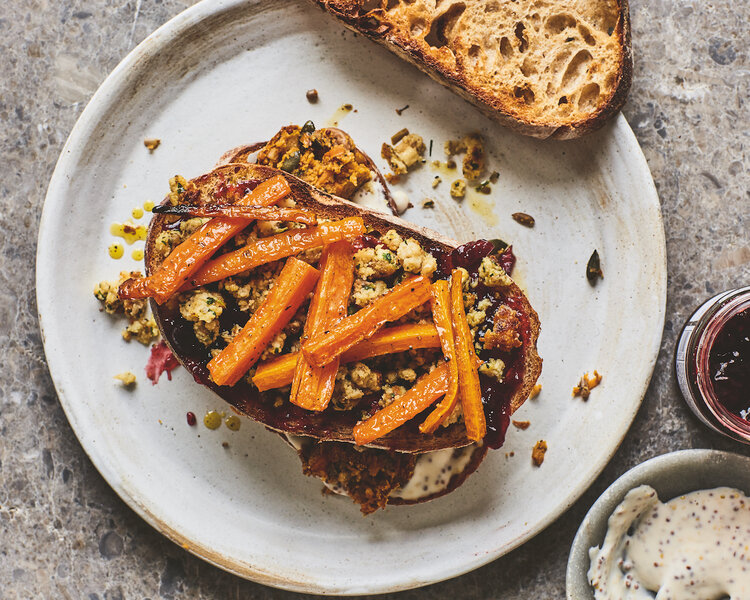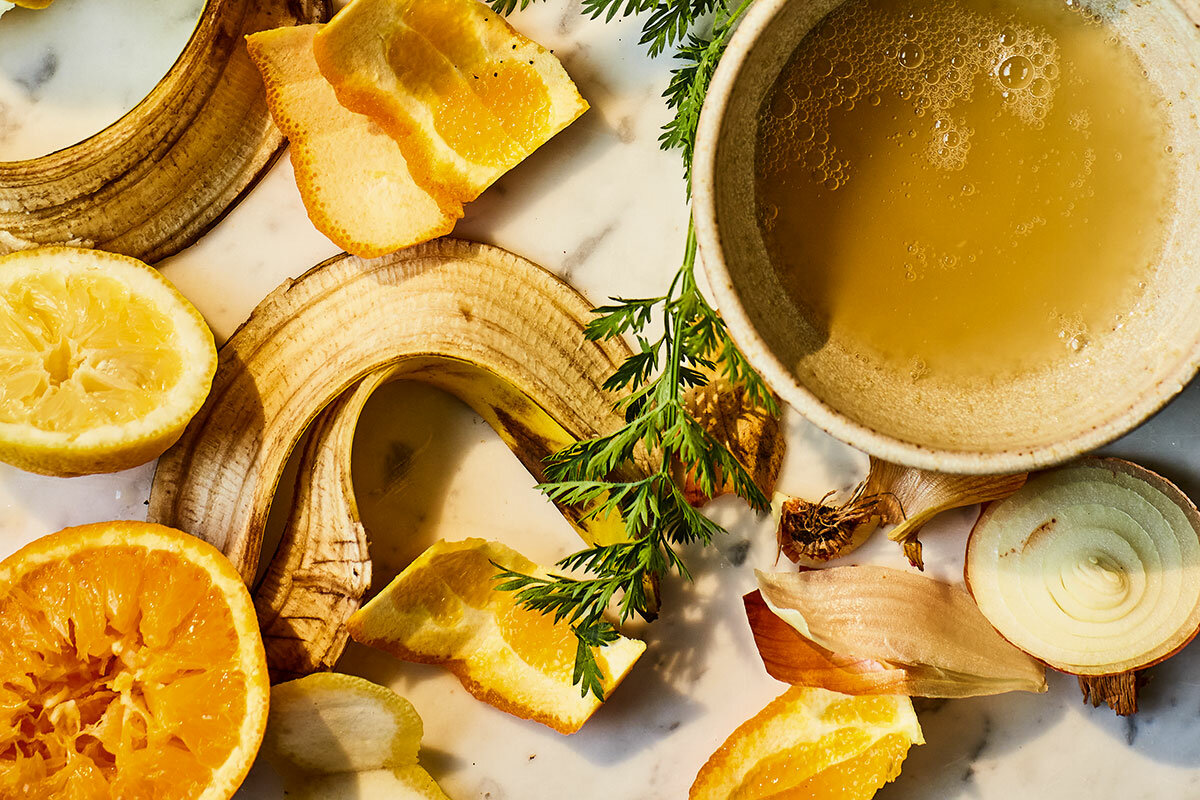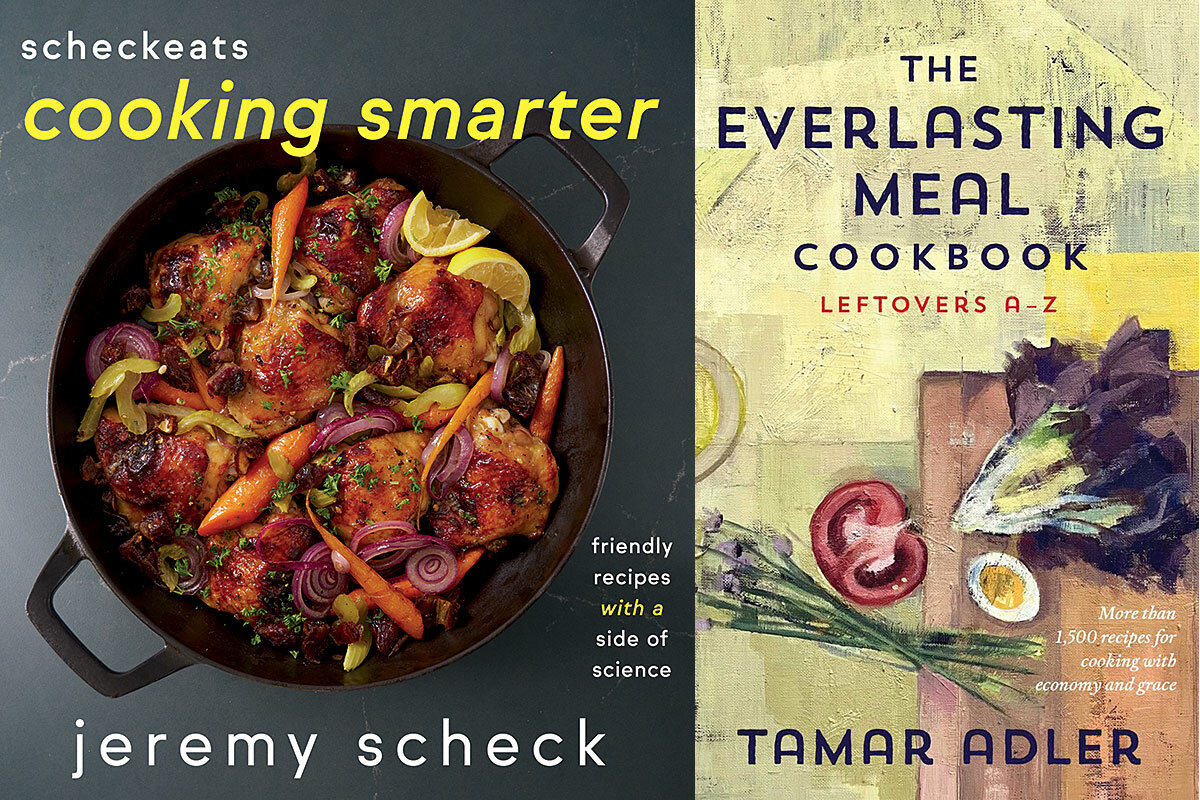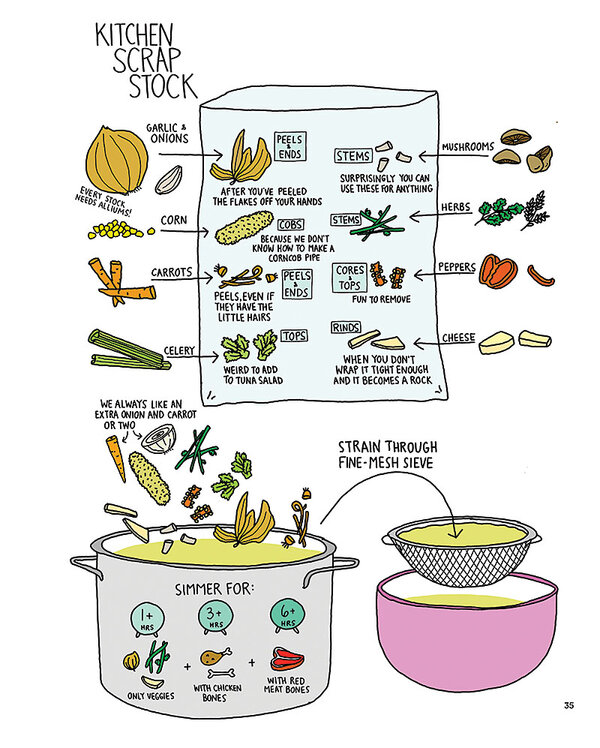Hack your fridge: Delicious meals with less waste
Loading...
The old proverb “Waste not, want not” has renewed meaning and urgency in the kitchen, as more cookbook writers emphasize a key reason for reducing kitchen waste: the future of the planet.
Beyond eating local and in-season produce, eliminating food waste has become the latest culinary step in reducing emissions. This isn’t hyperbole. In the United States alone, 30% to 40% of the food supply is wasted each year, according to the U.S. Department of Agriculture. That’s more than 125 billion pounds of food a year that goes uneaten, according to some estimates. Further, if waste ends up in plastic bags bound for the landfill, it could take years to break down.
A head of lettuce in a garbage sack, for instance, could linger as a glob of slime through the time it takes a child to grow and graduate from college. The methane gas that builds up from such food waste contributes to rising global temperatures.
Why We Wrote This
A story focused onMore than 125 billion pounds of uneaten food ends up in U.S. landfills each year. A quartet of cookbook authors help readers eat well and reduce food waste with commonsense approaches.
In October, government officials from 18 U.S. states urged the Environmental Protection Agency to phase out food waste disposal in landfills by 2040. At this year’s United Nations Climate Change Conference, which runs Nov. 30 through Dec. 12, food waste will be a priority.
So, what can a home cook do? This season’s roundup of cookbooks provides tips, encouragement, and tasty recipes to inspire new mindfulness in the kitchen.
Hand-holding for newbies
Since commercial kitchens and restaurants are enormous contributors to food waste, one way to slow the tide of garbage is to cut back on dialing Uber Eats and start cooking at home. For beginner cooks, Jeremy Scheck offers simple dishes in “Cooking Smarter: Friendly Recipes With a Side of Science.” The author began cooking for himself in college on a shoestring budget. He first posted his recipes on a blog, but when he was sent home from school in March 2020, he switched to TikTok under the handle @scheckeats. And that’s where Scheck found an eager audience of people also stuck at home with nothing to do. His videos of simple roast potatoes garnered more than 20 million views.
“Cooking Smarter” is a carefully curated collection of his favorite recipes, with ideas for avoiding things like a cabinet full of one-use spices (read: waste). And that bottle of maple syrup isn’t just for pancakes; it’s also flavoring for salad dressing, a sweetener in muffins, and a glaze for roasted vegetables.
Scheck has your back, too. He provides guidelines to boost confidence in a short chapter, “Don’t Poison Yourself: Food Safety 101,” that includes tips for storing and freezing leftover food.
Another simple conservation step: Don’t bother to peel those carrots, apples, and potatoes. It may sound like basic advice, but that’s perfectly OK for newbie cooks who also like to scroll TikTok. Scheck’s humor will keep readers laughing as they, yes, cook smarter and learn the secrets to create mom’s roast chicken.
Fresh produce to the fore
Everyone has forgotten items lurking in the fridge and cupboards, and even if they aren’t filling landfills now, they soon will be. Max La Manna can help you change that with “You Can Cook This! Simple Everyday Recipes From What’s Left in Your Fridge.” He explains how to determine if your food is still safe to eat and how to save time and money by shopping in your own kitchen. But first, get organized. La Manna explains how to store perishable, semiperishable, and staple foods to maximize their shelf life. He advocates purging your fridge every two weeks, specifically those back corners. A diagram shows which shelves in your fridge should store leftovers (top shelf) and where to tuck butter and cheeses (top shelf of the door).
Since fresh foods are the quickest to turn bad, La Manna offers several helpful pages in the index for storing staples like potatoes, squash, leafy greens, herbs, fruit, and dairy. He also encourages using the whole vegetable, such as in pesto made from carrot tops, broccoli stems, or other wilting greens.
His recipes will satisfy more adventurous eaters while also pleasing the eye. An example is the colorful ribbons of carrots and beets bathed in a tahini balsamic vinaigrette. La Manna, who has a strong social media presence, folds in analytics to endorse his recipes. Would you believe 4 million viewers? Then check out his crowd-pleasing tofu butter “chicken” recipe.
Chinese American fusion
Reduced waste is good, but no waste is better. Boston sisters and business partners Margaret Li and Irene Li level things up in “Perfectly Good Food: A Totally Achievable Zero Waste Approach to Home Cooking.” That’s right, zero waste.
Before you think that means eating garbage, the Li sisters will demonstrate the joy to be found in running a kitchen so efficiently your fridge will hum with happiness. The award-winning Lis have operated food trucks and restaurants, and written cookbooks all with an eye toward a more sustainable food system. This cookbook, designed to teach and entertain the home cook, is based on their website “Food Waste Feast.” It’s written in a voice that sounds like your bestie and is brought to life with illustrations by Iris Gottlieb, which add humor and color.
A few tips that will change your kitchen life: create an “eat me first” box in your fridge to keep the most perishable ingredients front and center, view expiration dates with an open mind, learn how to compost like a champ, and understand the difference between the vegetable crisper and fruit crisper.
“Hero recipes” in the vegetable and fruit section emphasize flexibility and creativity while avoiding additional trips to the grocery store.
The Lis are wizards of Chinese American fusion food, so it’s no surprise that pickling, stir-frying, and Asian-inspired recipes are recurring themes. With so much good information and recipes to absorb in this cookbook, you will turn to it again and again.
Tasty and artful leftovers
Even experienced cooks will find something to learn from Tamar Adler’s “The Everlasting Meal Cookbook: Leftovers A-Z.” This should join the reference shelf in your kitchen as a comprehensive guide to assembling any mismatched array of food into something artful and memorable.
Adler, who has an impressive résumé of cooking in the kitchens of Prune and Chez Panisse in addition to being an accomplished food writer, has captured her kitchen wisdom in more than 1,500 recipes.
The book is helpfully organized into sections on vegetables, fruits and nuts, seafood, and dough and noodles. So you’ll know exactly where to turn for a recipe that uses wilted radicchio, for example. In this case, sauté the radicchio with olive oil, garlic, and beans, then top with fresh herbs and grated Parmesan cheese.
Ponder her lyrical musings while you breathe in the steam of savory stock broth as it simmers. In the introduction to the section on meat and tofu, she writes, “If we each bowed sometimes, in sight of our children, before ingredients as humble as animals’ feet, it might teach useful lessons about how to treat our fellow beings.”
Despite her culinary pedigree, Adler hangs her oven mitts in a typical home kitchen. In the snacks section, you’ll find uses for stale cereal and snacks, such as the Fried Rice Cheeto Salad (yes, you read that right). Under “Oreos, stale,” Adler states simply, “Let’s be honest. Oreos are good stale.”











